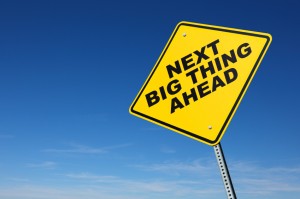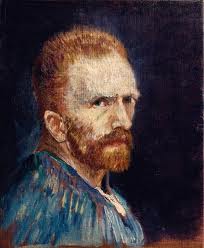Creativity in Five Steps

Just five more steps.
How does creativity happen? Is there a pattern — more or less standard — that we can repeat? Is there a process that can lead us from ordinary beginnings to extraordinary ends? Mihaly Csikszentmihalyi — while not guarateeing results — writes that creativity typically evolves through five stages.
The first stage is preparation. Basically, you need to know the rules before you break them. Thomas Kuhn writes that scientific paradigms reflect a basic consensus of how the world operates. Prior to Copernicus, the astronomical paradigm held that the earth was the center of the universe. Before Copernicus could change the paradigm, he had to immerse himself in it. Only then could he make the observations that changed the paradigm.
The second phase is incubation, “… during which ideas churn around below the threshold of consciousness.” This is when I like to go for a walk. I like to lay things aside, clear my head, and let my mind wander. It’s a haphazard process — sometimes nothing happens. Sometimes I simply forget what I was thinking about. Other times, however, something bubbles up that’s worth capturing. (One of the reasons I write this blog is to double back on my own thinking, recall what I wrote months ago, and perhaps make connections I would otherwise miss).
Third, is the insight — the Aha moment. As we saw in the article on sleepiness and creativity (click here), focusing intently on the problem at hand may actually inhibit the Aha experience. When you focus, you block out random thoughts and stray ideas. But it’s those very thoughts and ideas that may produce the insight. When you’re tired — or when you can induce your mind to wander — those stray thoughts are not blocked out and can help you see things more creatively.
Fourth is evaluation, “…when the person must decide whether the insight is valuable and worth pursuing.” This is a difficult step. You think you’ve had a brilliant flash of insight … you start dreaming of a trip to Stockholm to accept a Nobel Prize. On the other hand, maybe it’s just a crackpot idea that your colleagues will laugh at. A thorough understanding of the current paradigm will help. If you’re a master of your discipline, you’ll have a much better idea of which ideas are worth pursuing and which are just goofy.
The fifth step is elaboration. You develop the idea, conduct the research, test your hypotheses, and present your conclusions to your colleagues — who may just rip it apart. As Csikszentmihalyi notes, “This is what Edison was referring to when he said that creativity consists of 1 percent inspiration and 99 percent perspiration.”
Does the five-step process always produce creative innovations? No, not at all. But, if your purpose is to create new ideas, products, and services you should always be cognizant of where you are in the process. Following the process doesn’t guarantee success. But not following it virtually guarantees failure.
You can find Mihaly Csikszentmihalyi’s book here. Thomas Kuhn’s book is here.
Are You More Creative When You’re Sleepy?

Gosh, I’m feeling so creative.
I’m a morning person. I wake up every day full of plans and optimism. I just know I can solve the problems of the world today. (Yes, I’m a bit obnoxious). In the evening, on the other hand, I run out of gas. I like to do a little light reading and go to bed early. A psychologist would say that the morning is my “optimal” time while the evening is my “non-optimal” time.
It seems logical that I would be more creative during my optimal time, no? Well, … maybe not. According to two psychology professors, Mareike B. Wieth and Rose T. Zacks, your non-optimal times may be your better times for creativity.
In a research paper published in 2011 (click here or see full citation below), Wieth and Zacks determined the optimal times — morning or evening — of 428 randomly selected students and then asked them to complete, three “analytic” problems and three “insight” problems. Analytic problems “…require the solver to ‘grind out the solution’ by searching through and narrowing the problem space.” In other words, you start on a path and stay on that path until you find the solution.
Insight problems, on the other hand, “are often solved suddenly with a ‘flash of illuminance’ … or what has also been called an ‘‘Aha’’ experience where the solution seems to just pop into mind.” The process of solving an insight problem is also different. People typically start on a given path, hit a wall, and then jump to a different path. As the authors phrase it, “…to move past the impasse, the solver must break away from his or her focus on the current representation of the problem and find an alternative way of structuring the problem space.”
Students completed their six problems at randomly assigned times. Some completed the problems during their optimal times, others during their non-optimal times. The results varied by problem type. Students solved analytical problems better when they worked during their optimal time. For insight problems, however, students were more successful when they worked during their non-optimal times.
Why would that be? Wieth and Zacks hypothesize that it has to with “…inhibitory processes [that] control the flow of information from thought and perception.” Simply put, we can focus better during our optimal times because our inhibitory processes block out distracting information. That’s good for grind-it-out problems — our inhibitory processes help us focus on the solution path. With insight problems, on the other hand, distracting information can actually help us jump to the right path. During our non-optimal times, our inhibitory processes are less effective. We’re less focused and our mind wanders more. More “distracting” information enters our thoughts. All of that helps us discern other paths that can lead to an Aha experience.
So, do you want to be more creative? Just stay up late and let your mind wander. That’s not so hard.
Mareike B. Wieth & Rose T. Zacks (2011): Time of day effects on problem solving: When the non-optimal is optimal, Thinking & Reasoning, 17:4, 387-401. This work was supported by National Institute on Aging Grant R37 AG04306.
More Creative Creativity

I’m a traditionalist. And an iconoclast.
In his classic research on creativity, Mihaly Csikszentmihalyi wrote that creative personalities often display ten contrasting characteristics. In previous articles, we’ve looked at the first six. (Click here and here). Today let’s look at the final four.
In all cultures, men are brought up to be “masculine” and to disregard and repress those aspects of their temperament that the culture regards as “feminine,” whereas women are expected to do the opposite. Creative individuals to a certain extent escape this rigid gender role stereotyping. Csikszentmihalyi refers to this as androgyny — not just in the sexual sense but in the broader, cultural sense: “a person’s ability to be at the same time aggressive and nurturant, sensitive and rigid, dominant and submissive…” In his sample of creative personalities, Csikszentmihalyi found that the men were more sensitive and the women more assertive than their cultural norms would suggest.
Generally, creative people are thought to be rebellious and independent. Yet it is impossible to be creative without having first internalized a domain of culture. To master the vast knowledge of a given discipline, novices need to work very hard. They wouldn’t work so hard unless they believed deep knowledge of the field were important. Thus, in some senses, they are traditionalists as much as they are iconoclasts.
Most creative persons are very passionate about their work, yet they can be extremely objective about it as well. To perform difficult tasks that might take years to complete, one needs to be passionate. Yet to place one’s work against an existing domain’s framework — and to make it credible — one needs to be clear-eyed and objective.
Finally, the openness and sensitivity of creative individuals often exposes them to suffering and pain yet also a great deal of enjoyment. Leading a discipline into a new way of thinking is a lonely job. Being sensitive (as noted above) only complicates the issue. Csikszentmihalyi asks an important question: does suffering lead to creativity or does creativity lead to suffering? Normal people may see divergent thinking and obsessive interest in obscure topics as weird or even deviant. As a result, “the creative person may feel isolated and misunderstood …. Yet when the person is working in the area of his or her expertise, worries and cares fall away, replaced by a sense of bliss. Perhaps the most important quality, the one that is most consistently present in all creative individuals, is the ability to enjoy the process of creation for its own sake.”
So we have ten different contrasting personality types that commonly occur in creative people. In each case, the creative personality appears at two different points on the spectrum. They are both traditionalists and iconoclasts. Smart and naive. Energetic and quiet. Introverts and extroverts. Imaginative and realists. As Csikszentmihalyi points out, “…without the second pole, new ideas will not be recognized. And without the first, they will not be developed to the point of acceptance.”
Click here for Csikszentmihalyi’s book. By the way, his surname is pronounced Six-Cent-Mihaly.
Creatively Creating Creativity

I alternate between fantasy and reality.
I recently wrote that Mihaly Csikszentmihalyi, in his book, Creativity: Flow and The Psychology of Discovery and Invention, identified ten different pairs of opposing traits that occur commonly in creative personalities. We looked at three pairs in that post (click here). Let’s look at three more today.
Creative individuals alternate between imagination and fantasy at one end, and a rooted sense of reality at the other. Csikszentmihalyi notes that Albert Einstein believed that both art and science “are two of the greatest forms of escape from reality that humans have devised.” To create new truths — to change the paradigm in Thomas Kuhn‘s phrase — one needs a great imagination, bordering on fantasy. At the same time, the creative person realizes that the fantasy could actually be true. The imagination extends well beyond reality but, sooner or later, reality catches up. Csikszentmihalyi also notes how artists respond to Rorschach tests. Creative artists tend to respond with more original and more detailed stories than “normal” people. But the artists rareley give “bizarre” answers as normal people sometimes do. Csikszentmihalyi concludes, “Normal people are rarely original, but they are sometimes bizarre. Creative people, it seems, are original without being bizarre. The novelty they see is rooted in reality.” Thus, it seems that it’s good to study reality so you can connect it to your imagination. Imagination disconnected from reality is simply bizarre.
Creative people seem to harbor opposite tendencies on the continuum between extroversion and introversion. Being truly creative requires a lot of time alone. You need solitary time to master your domain, to learn how to play the piano, or to write your magnum opus. Yet many of Csikszentmihalyi’s creative people said it was equally important to interact with other people and just kick ideas around. As Freeman Dyson puts it, “Science is a very gregarious business. It is essentially the difference between having this door open and having it shut.”
Creative individuals are also remarkably humble and proud at the same time. Highly creative people understand that they “stand on the shoulders of giants” — they first mastered their domain and then they extended it. Csikszentmihalyi points out that they also understand the role of luck in their discoveries and that they’re more focused on future work, making past work seem less boast worthy. At the same time, creative individuals realize that they have indeed created new forms and structures that genuinely make them proud. Csikszentmihalyi sees this duality as the contrast between competition and cooperation. To change your field (or to change the world), you need to be aggressive. “Yet at the same time, [creative individuals] are often willing to subordinate their own personal comfort and advancement to the success of whatever project they are working on.”
Click here for Csikszentmihalyi’s book. By the way, his surname is pronounced Six-Cent-Mihaly.
What Makes You Creative? Part 1

I’m smart but also naive.
What makes people creative? Can you exercise your creative “muscles” to become more creative?
I’ve read a lot trying to answer these questions. The best single source of answers I’ve found is Mihaly Csikszentmihalyi’s Creativity: Flow and The Psychology of Discovery and Invention. Csikszentmihalyi and his associates interviewed more than 100 people who had created fundamental changes in their domains.
After sifting and sorting the interviews, Csikszentmihalyi writes that the one word that best describes the creative personality is complexity. If you think of personality traits as continuums, creative people tend to show up at both ends. For instance, one continuum might run from energetic at one end to lazy at the other. Csikszentmihalyi observes that creative people are highly energetic and focused at some times but lethargic at other times. They can work very hard for extended periods of time but then “hibernate” to re-charge their batteries. Many interviewees noted that a daily nap is essential to their creative process.
Csikszentmihalyi identifies ten different pairs of opposing traits that occur commonly in creative personalities. Let’s look at three today. I’ll cover the rest in future posts.
Creative individuals have a great deal of physical energy, but they are also often quiet and at rest.
Creative individuals can work long hours while maintaining a high level of energy. According to Csikszentmihalyi, the most important aspect of this is that creative individuals can manage their energy levels more or less on their own. As Csikszentmihalyi writes, “When necessary they can focus it like a laser beam; when it is not, they immediately start recharging their batteries.”
Creative individuals tend to be smart, yet also naive at the same time.
How smart are they? Pretty smart but typically not geniuses. It seems that an IQ of about 120 is a dividing line. Up to 120, creativity seems to increase with intelligence. As IQ rises above 120, creativity seems not to increase much. Other factors are more important.
If intelligence (as measured by IQ) leads to convergent thinking – finding a well-defined answer to a well-defined problem – then naiveté leads to divergent thinking. Csikszentmihalyi defines this as “the ability to generate a great quantity of ideas…or the ability to switch from one perspective to another….”
An issue with divergent thinking is that it’s often difficult to distinguish a good idea from a bad idea. Several of Csikszentmihalyi’s respondents say that the main thing separating them from less creative individuals, is that they are better able to predict which problems are soluble and which are not.
A third paradoxical trait refers to the related combination of playfulness and discipline, or responsibility and irresponsibility. There is no question that a playfully light attitude is typical of creative individuals.
In Thinking Fast and Slow, Daniel Kahneman writes about the sheer joy of working with his colleague, Amos Tversky. They thought deeply – but differently — about the problems they studied and seemed to have a lot of fun.
As Csikszentmihalyi points out, doggedness is the necessary counterpart to playfulness. Being playful can get you started but it rarely gets you finished. Perhaps that’s why Edison said, “Invention is 1% inspiration and 99% perspiration”
Can these traits be taught? Can we become more creative? Within limits, I think so. I suspect that intelligence can’t be radically altered but certainly we can learn to be naïve. Divergent thinking is taught in most creativity workshops. Playfulness shouldn’t be that hard to learn. Doggedness may be a bit more difficult but, with the proper motivation, it too can be mastered. As for energy management … well, how hard is it to learn to take a nap?
(To read the other articles in this series, click here and here).